Notes
The Trump Vs. Obama Situation Room Photos
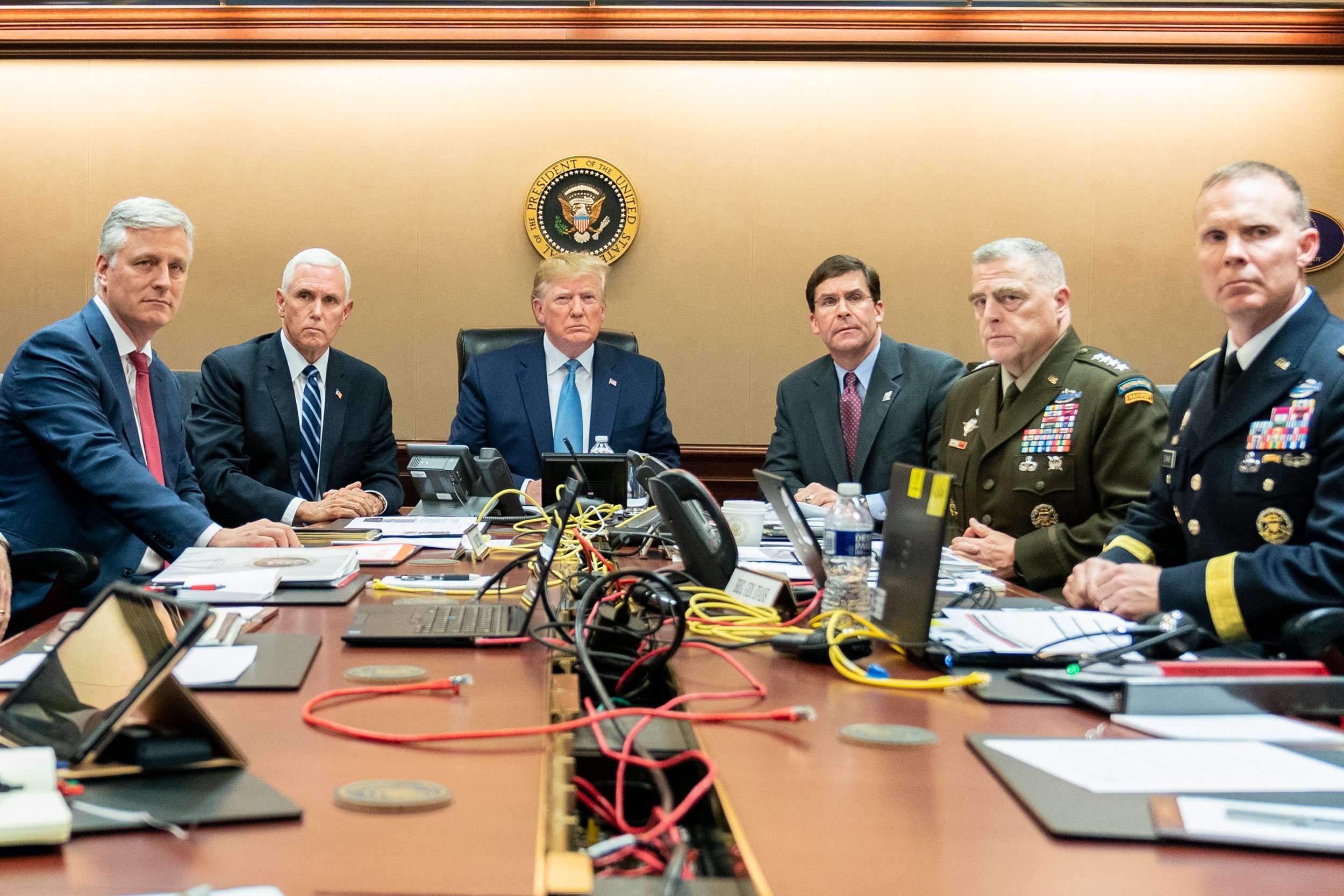
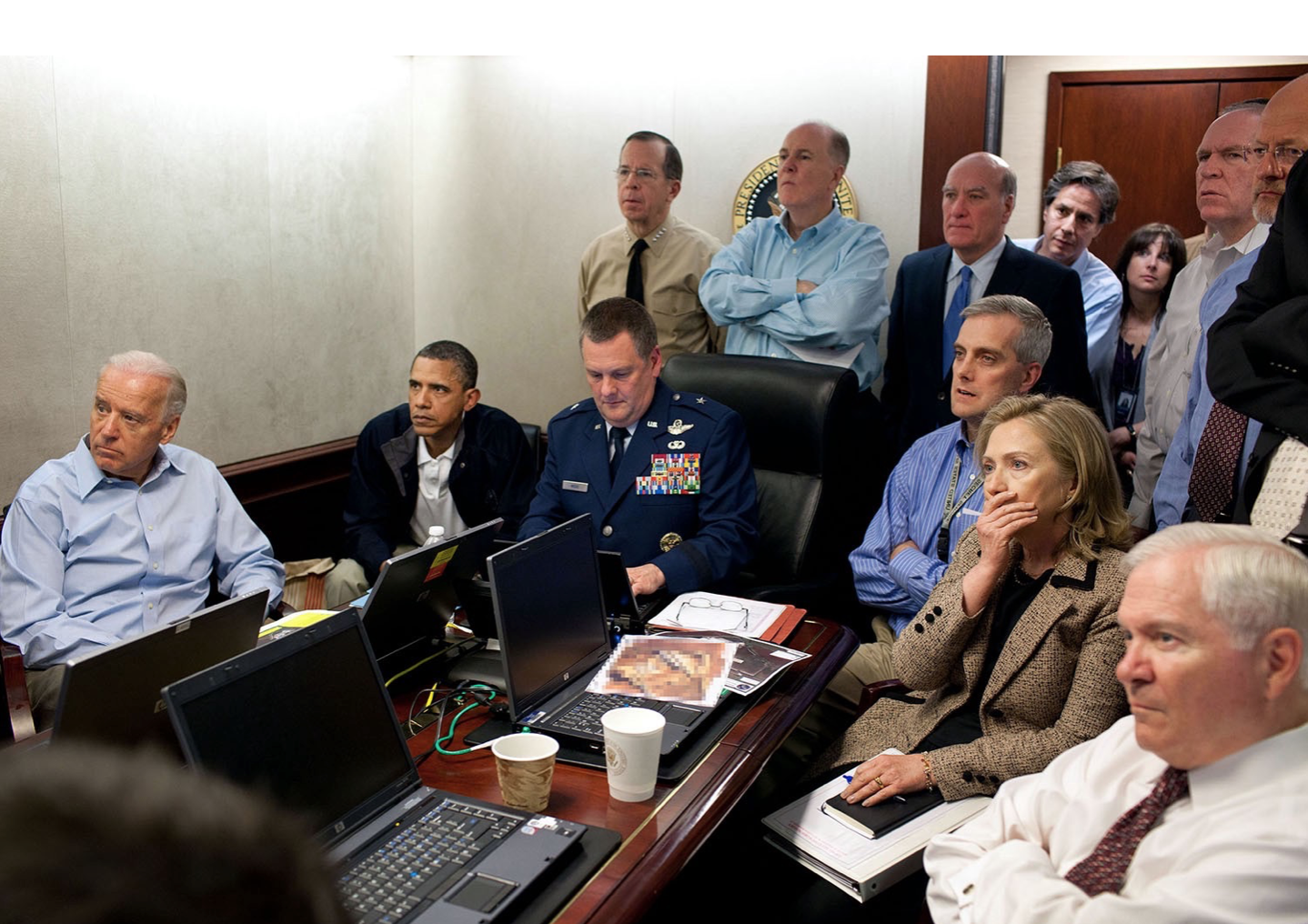
As soon as the White House announced the death of Bakr al-Baghdadi and released this picture, the Trump and the Obama Situation Room photos became historical twins. People have flocked to social media to draw comparisons. Given this is what we do, here is our first pass comparison. We will probably be updating this post, especially to consider if the photo was staged. If it was, though, it only brings those points and comparisons below into stronger relief.
Focus: The Souza pic, shot from the side like that, is clearly documentary. It’s not about the political and military actors, so much as those actors singularly engaged in the moment and the event. The Craighead photo, on the other hand, completely compromises the photo as a fly-on-the-wall observation, as a documentary photo, and an observation of a historical moment.
By standing right above what I assume is a monitor with the operation on the screen, and shooting the group head-on, she turns this into a posed portrait. Just to add: there may be more than one monitor (who knows what Pence, and the unidentified guy far right, are fixed on), but it’s hard to tell where the different men are looking.
Overall, what’s stunning about the Trump Situation Room photo, just like the Trump administration itself, is how it blurs the act of governance with the act of performance and grandstanding. Trump telegraphs this once again as he characterizes the event as a show. According to AP News, Trump said it played out “as though you were watching a movie.” What drives this home is the fact that there’s no way to tell if Trump (like O’Brian (left/red tie) is looking directly into the White House photographer’s camera or at the mission.
POTUS Placement: Trump is near-always the center of a White House photo, as well as the White House visual universe. This convention tells us, no matter what’s going on, the story is always about him. The way he’s lined up with the seal on the wall might not be altogether accidental that way. (“Fittingly,” we at RTP call this a “halo shot.”) In the bin Laden pic on the other hand, it’s clearly about team. It’s not just that Obama has a side seat and a lower profile. The number of participants reinforces this. You have more people with more buy-in at more levels of responsibility. (And, in contrast to yesterday’s shot, they are all named in the caption.) In Trump’s case, from the picture and what we know of his tenure, he calls the shots accompanied by a few figureheads.
Not pictured: CIA director Gina Haspel, whose team’s intel was crucial for this Baghdadi operation. Trump at live briefing told us: “Gina was great.” https://t.co/YPVUADpftK
— Jennifer Jacobs (@JenniferJJacobs) October 27, 2019
Gender: Speaks for itself, at least if you are factoring rank and screen prominence. (Haspel’s absence also accentuates this.)
Chest hardware: Double in the Trump shot.
Cables and such: Maybe the rat’s nest of cables was a visual trade-off to get the portrait. Still, when you don’t naturally command authority (and name recognition–Trump having cycled through various National Security Advisors and Defense Secretaries), there can be more emphasis on the hardware. That’s in contrast to the famous blurred map in the Souza photo, the set-down pair of glasses, and Brigadier General Webb actually working a controller. All these elements cue us that the players in the Obama scene were engaged at a more detailed and operational level.
By the way, the Twitter sleuths are having a symbolic field day with that cable in the foreground that isn’t connected to anything, and whether those laptops are even hooked up.
Clothing: In the al-Baghdadi’ raid picture (it’s near impossible not to label it “the Trump photo”), the men are all wearing suit jackets and look completely spry. That’s in contrast to the literal “shirt sleeves” nature of the bin Laden photo. You get the same information from the tired-looking faces in bin Laden raid shot. These people have obviously been working the situation as opposed to just watching/getting their picture taken.
Was it Staged? Even if you haven’t been following social media, a lot of the details here would argue that this photo was staged. (By the way, that’s exactly what we thought about the Bush Oval Office photo that purported to documented the missile strike that began the Iraq War.)
Here are a few tweets that speak to the suspicion. If there’s more to analyze, we’ll be sure to provide an update.
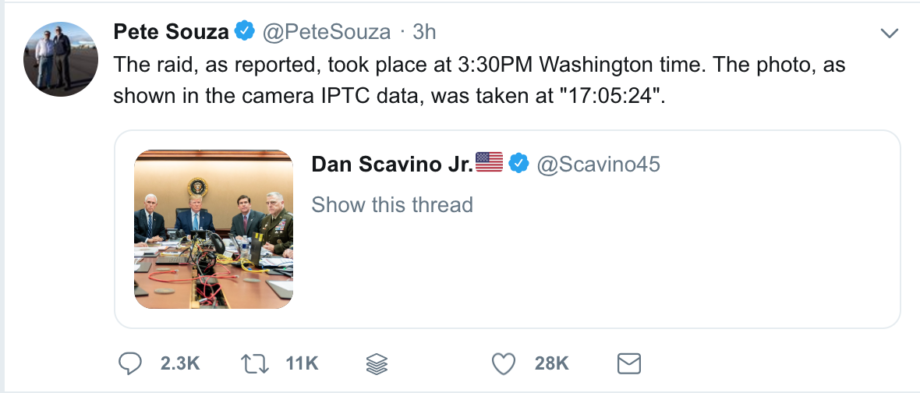
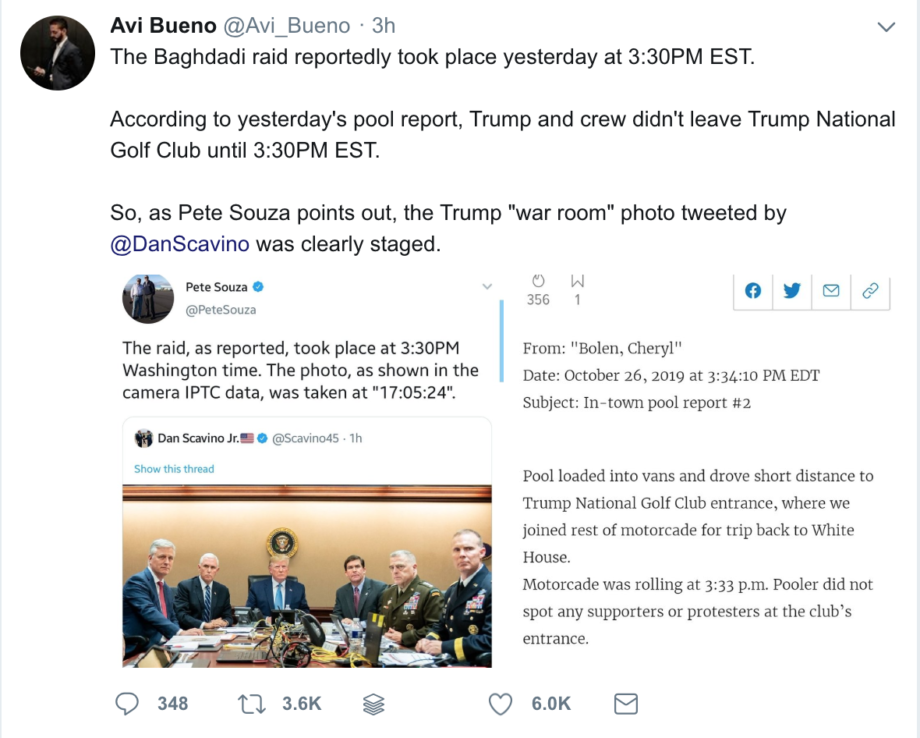
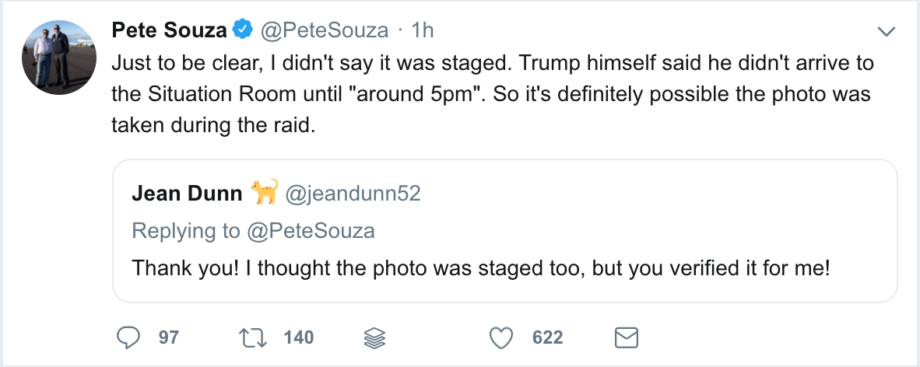
— Michael Shaw
Update, 5:43 PST October 27, 2019
At this point, it remains unclear when during the raid this photograph was taken. It’s important to emphasize however that the way the White House is compelled to pose and perform everything largely minimizes the difference.
For example, it’s incredible they would even think to turn this into a portrait, especially at or near the moment when Bagdadi blew himself up.
As we discussed above, the photo — as compared to the bin Laden raid photo — is about the team and the act of management and witnessing. But there are clearly two or three more people at the table. There seems to be someone on the near right. And there are at least two more near left, based on the papers and notepads, a hand, and then someone reflected in the monitor. So this photo is also weird for cutting off those other participants.
I’m also concerned about the expression of Joint Chiefs Chair General Milley (middle right). He doesn’t show the typical serious/concerned frown of the others. Those eyes make me think something else is going on. If the photo wasn’t staged in the formal way we tend to understand that term, his discomfort in (or with?) the portrait is also troubling.
And finally, why would they bother to set up nameplates?
It’s all so troublesome and hard to believe, until you remind yourself that the photo, to Trump at least, is just a performance for the camera in front of the one that’s on the screen.
Photo: Shealah Craighead/White House. Caption: President Donald J. Trump is joined by Vice President Mike Pence, National Security Advisor Robert O’Brien, left; Secretary of Defense Mark Esper and Chairman of the Joint Chiefs of Staff U.S. Army General Mark A. Milley, right, Saturday, Oct. 26, 2019, in the Situation Room of the White House monitoring developments as U.S. Special Operations forces close in on notorious ISIS leader Abu Bakr al-Baghdadi’s compound in Syria with a mission to kill or capture the terrorist. Photo 2: Pete Souza/White House Caption: President Barack Obama and Vice President Joe Biden, along with members of the national security team, receive an update on the mission against Osama bin Laden in the Situation Room of the White House, May 1, 2011. Seated, from left, are: Brigadier General Marshall B. “Brad” Webb, Assistant Commanding General, Joint Special Operations Command; Deputy National Security Advisor Denis McDonough; Secretary of State Hillary Rodham Clinton; and Secretary of Defense Robert Gates. Standing, from left, are: Admiral Mike Mullen, Chairman of the Joint Chiefs of Staff; National Security Advisor Tom Donilon; Chief of Staff Bill Daley; Tony Blinken, National Security Advisor to the Vice President; Audrey Tomason Director for Counterterrorism; John Brennan, Assistant to the President for Homeland Security and Counterterrorism; and Director of National Intelligence James Clapper. Please note: a classified document seen in this photograph has been obscured.
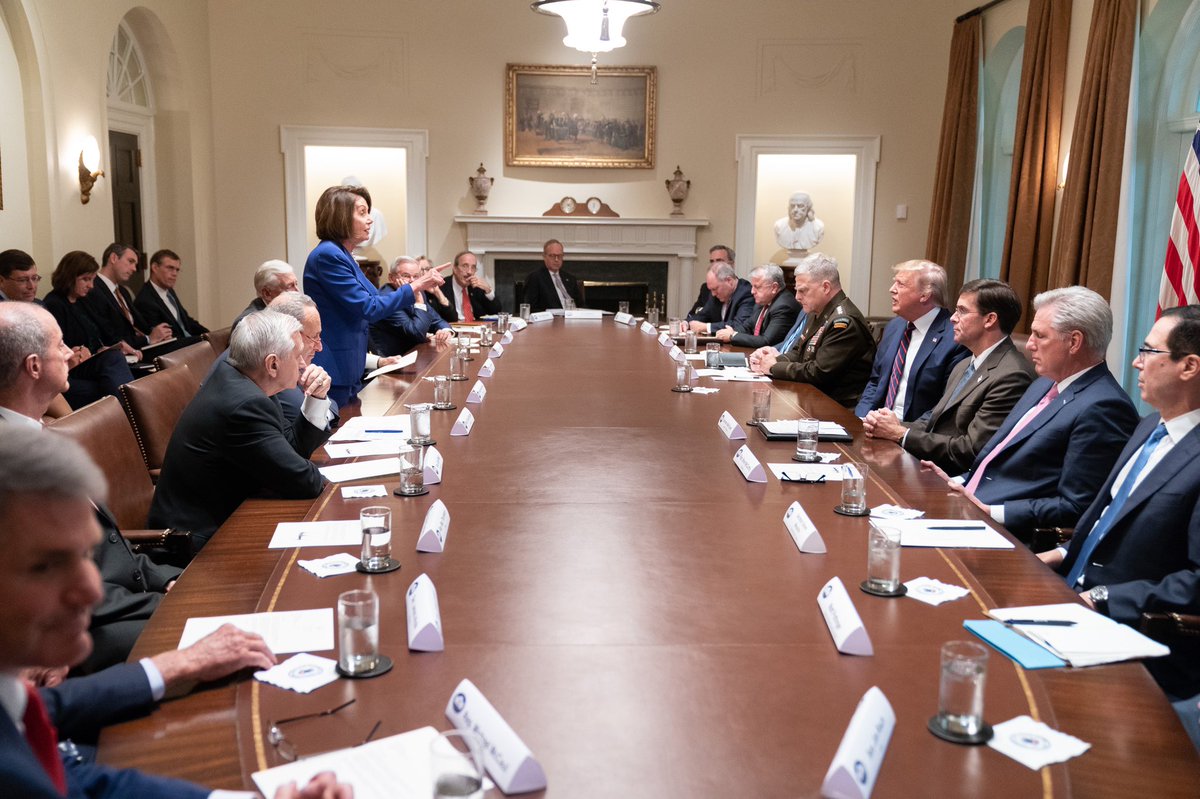
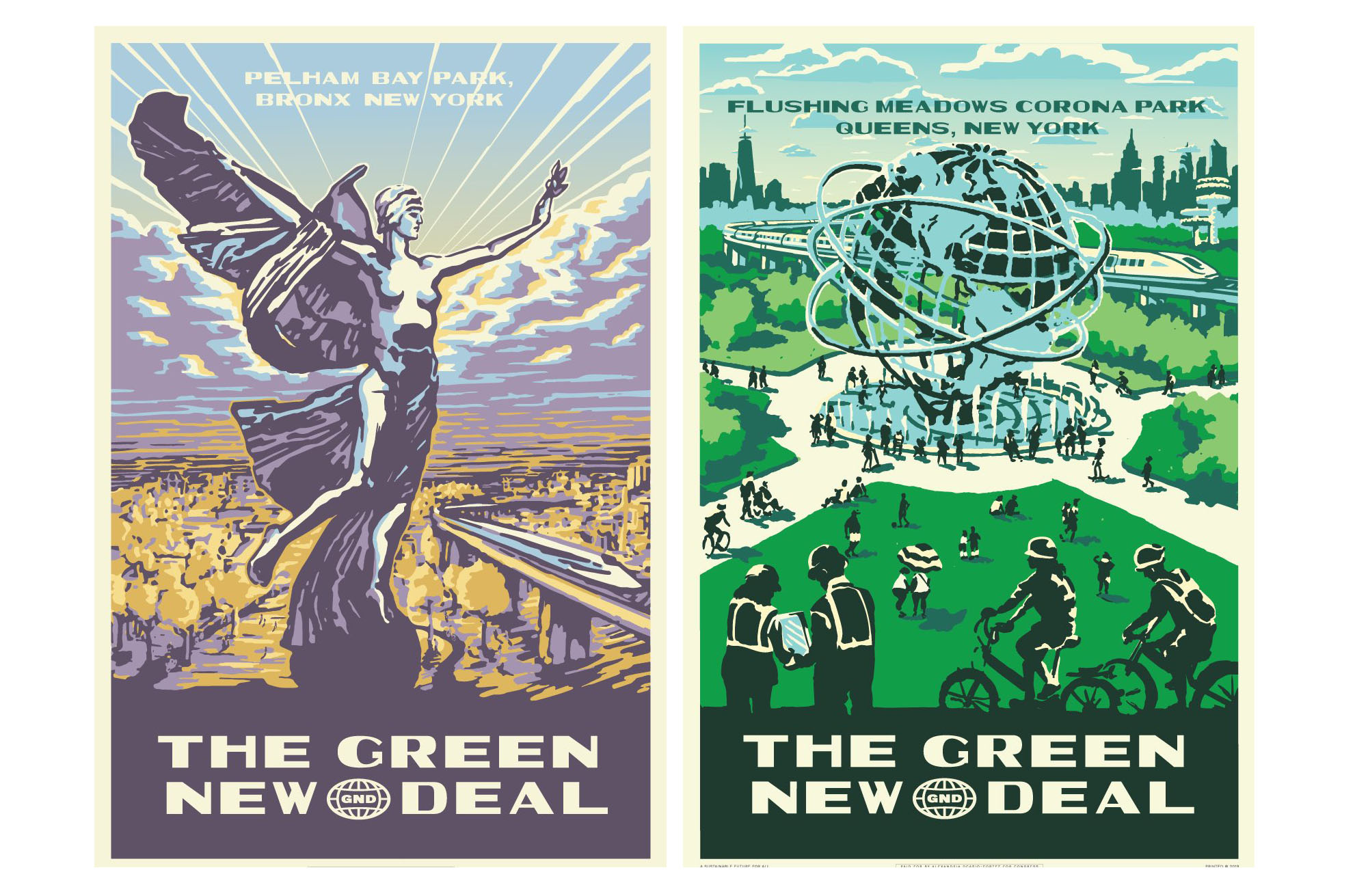
Reactions
Comments Powered by Disqus